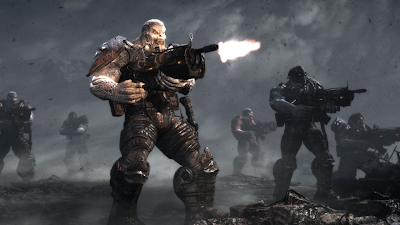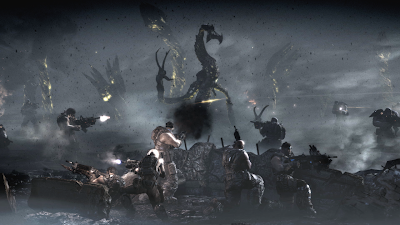
Late last week Ubisoft announced that it was ditching the use of printed instruction booklets for all of its upcoming games released later this year, starting with Shaun White Skateboarding, and following through with every new title thereafter. Their recent decision will effect all future PS3, 360 and PC titles in a scheme that the company says will not only save them a considerable amount of money, but that will also be responsible for a more environmentally friendly approach to producing videogames - they have already commissioned the use of the eco-box for its PC games, packaging which uses less overall plastic than regular boxes used for DVDs and games.
Laurent Detoc, president of Ubisoft North America stated that "Eco-friendly initiatives are important to the global community and introducing in-game digital manuals on Xbox 360 and PS3 is just the latest example of Ubisoft's ongoing commitment to being a more environmentally conscious company".
The company also claimed that the removal of instruction booklets would be beneficial to gamers, as more work would be put into creating a “more robust” digital manual held on the game disc, which would provide “easier and more intuitive access” to game information on the fly, when they say gamers need it the most.
Of course, Ubisoft’s statements uttering the fact that in this day and age that the ‘instruction booklet’ as we know it is largely redundant, is a viewpoint also held by a vast majority of mainstream gamers, evident by the lack of complaints, or even comments surrounding the increasingly paper thin booklets given with most new releases these days. One only has to look at the recent Call Of Duty outings (especially Modern Warfare 2) along with Need For Speed, and Ubi’s own Assassins Creed, to determine that by and large, in their current form, these booklets are pretty pointless. Almost to the point it seems, of being there just to fulfil a tradition started with single-coloured square pixel type games of the late seventies and the early eighties, a time in which videogame graphics were far too basic to effectively house an in-game tutorial.
Looking at these modern instruction booklets, the vast majority these days for the yearly franchise titles, and for the big annual heavy hitter sequels (COD, NFS etc), seem mainly to contain a brief handful of pages, filled with black and white text describing the controls, and maybe providing a single in-game screenshot showing off the HUD. In which case their inclusion is pretty pointless at worst, and complimentary at best, being ignored I imagine by the vast majority of gamers who pick up those titles.
Other games, like with Epic’s Gears Of War Series, Capcom’s Resident Evil 5, Street Fighter IV, or Nintendo’s Super Mario Galaxy, all have well thought out and carefully crafted booklets, which not only show players how to control the game, what the items are, and weapons available, but also provide a gamers with a back story for it’s characters, unseen artwork, hints and tips, or even just a nice read through about the world you’ll be entering as soon as the disc enters your chosen gaming machine.
Mario Galaxy for example, has detailed artwork showcasing the various moves the character has in the game, along with the various power ups he can pick up, and how they change his abilities and interactions with his environment. All of which are represented with numerous images and notes, and are a pleasure to read as well as to lovingly gaze at. Nintendo it seems understands the value of such an inclusion, not necessarily because casual gamers need to have such a thing, because most are just as likely to ignore it, but because largely, it is something that not only fans will appreciate, but also because it is a tried and tested tradition of out industry, to have a cool and colourful set of printed materials with every new purchase. It makes an item of its kind feel complete.
Likewise, the inclusion of a printed booklet in Epic’s Gears Of War serves to highlight the rich back-story surrounding the characters and locations in which the game is set, describing ‘emergence day’ and the early conflict with the Locust forces long before Marcus Fenix was imprisoned for treason. Filled with a muddy, reddish brown hue throughout, and containing intricately hand drawn artwork complementing the words about the weapons and conflict surrounding the game’s universe. It is far more than just a quick guide to how the game will, control, acting as more of a reference to a bigger world than what the actual game provides.
The same thing can be seen in most of the old 16 and 8bit titles, with games like Sonic The Hedgehog featuring descriptions and drawings of most of the enemies in the game, along with the stages that you’ll be playing through, minus the secretive last few stages, and most importantly, the actual game story itself. All this also applies to the likes of Mario, James Pond, Mortal Kombat, Street Fighter, Shinobi and pretty much every single title released in that era worth its salt.
Looking at instruction booklets in this way, you can see why there is still some value left to be had including one in your latest blockbuster hit, not just for completion sake, but perhaps to add a little more to the experience than just the digital content stored on the disc. I for one, like the ability when unsealing the game for the first time, to take a few moments to look over what’s included, maybe have a whiff of the box and manual when it first opens, before flicking through the pages in anticipation of what the game has in store for me.
Most, I suspect won’t care about this ‘feature’, and with the likes of Call Of Duty and Assassins Creed, I completely agree. The inclusion of the three or four page booklet with a brief controls description and photo of the game’s HUD, along with the obligatory warranty details is utterly pointless, and in my opinion a waste of time for all involved. In that case, it’s a perfect example of a series (or a game) which would benefit in not having a booklet included at all, especially when in both aforementioned titles, a definitive and easy to access controls refresher is available from the in-game pause menu.
Of course, maybe companies like Ubisoft should perhaps be looking at this from another angle entirely. Most games today are designed around strong narrative progression and focused character driven gameplay, so it would make a lot of sense in keeping the fat down with regards to background in-game cinematics, with a brief look on such a thing in the game’s instruction booklet instead. Combined with fresh, unseen artwork, introductions to all the lead characters, along with all the usual stuff, it could well be something to consider investing in. Maybe, and I would hate this to happen myself, is that the instruction booklet we know could become some checkbox feature on some collectors edition, doling out content that would have been commonplace in games just a decade or so ago, with the standard edition completely barren of such wares.
Overall, this debate on whether or not we ‘need’ or require an instruction booklet to go along with our games, is something which will definitely rear its head again. I imagine that in the near future we will have some developers that absolutely value what the inclusion of printed materials does for a product, whilst some all too keen to cut back costs and provide a perhaps more customisable digital alternative to suit the 21st century gamer. Either way, I can still see a road in which the loved, hated, instruction book can continue.
For better or worse times are changing, as are the people that play games and make games, in which it is inevitable that certain things will change in order to find the right balance between necessity and nostalgia.
Personally, I won’t be shedding any tears for lack of printed materials in any of Ubisoft’s, Activision’s, or EA’s offerings, but if the day comes when developers who put so much efforts into crafting a finely designed traditional instruction booklet comes to an end, then I suspect that I won’t be in the least bit pleased, and decidedly saddened by the whole affair. Maybe it’s time that more gamers stood up and actually started to care about what comes inside their much loved videogame packages, rather than trying to get everything for as little as possible, or maybe, we should except that the market and its audience as changed so much, that the ‘gamer’ and ‘videogaming’ as us old timers know it, is well and truly a thing of the past.





































